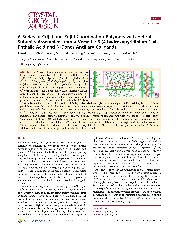摘要
A series of coordination polymers with various helical subunits, namely, [Cd(L)(CH3OH)(H2O)](n) (2), {[Cd(L)(1,4-bbi)]center dot(H2O)}(n) (3), {[Cd(L)(m-bix)(H2O)]center dot(H2O)(2)}(n) (4), [Zn(L)(4,4'-bpy)(0.5)](n) (5), and [Zn(L)(bpp)](n) (6) (H2L = 3-(4-hydroxypyridinium-1-yl) phthalic acid; PA = phthalic acid, a part of 3-(4-hydroxypyridinium-1-yl) phthalic acid)), have been hydro(solvo)thermally synthesized through the reaction of 3-(4-hydroxypyridinium-1-yl) phthalic acid with divalent zinc and cadmium salts in the presence or absence of N-donor ancillary coligands (1,4-bbi = 1,1'-(1,4-butanediyl)bis(imidazole), m-bix = 1,3-bis(imidazol-1-ylmethyl)benzene, 4,4'-bpy = 4,4'-bipyridine, bpp = 1,3-bi(4-pyridyl)propane). As a result of various coordination modes of the versatile 3-(4-hydroxypyridinium-1-yl) phthalic acid and different coligands, these compounds exhibit structural diversity. Compound 2 displays a layered structure containing two kinds of (Cd-L)(n) and (Cd-PA)(n) helical chains. Compound 3 features a 3D supramolecular framework embodying a type of supramolecular helical chain. Compound 4 exhibits a metal-organic ribbon structure with two kinds of helical chains. Compound 5 features a 3D architecture in which a ID lemniscate shape pseudo meso-helix chain is observed. Compound 6 exhibits a 2D achiral layer in which the ID (Zn-bpp)(n) helical chains are alternately arranged in a right- and left-handed sequence. These compounds have been characterized by powder X-ray diffractions (PXRD) and thermal gravimetric analyses (TGA). In addition, their photochemical properties have also been investigated.
- 出版日期2012-9
- 单位郑州大学
